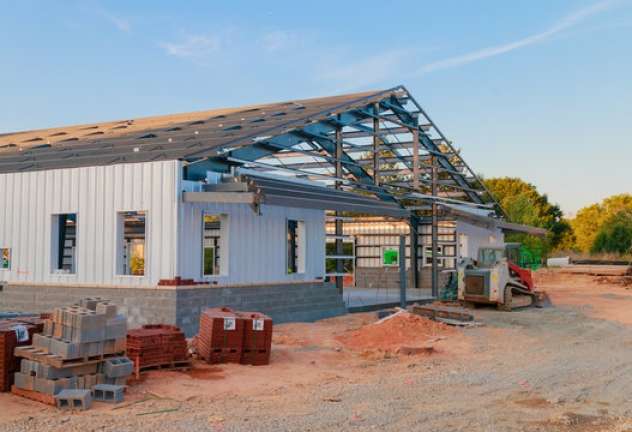When people hear the term “asphalt”, the first thing that comes to mind is the shiny black pavement material used in roads, driveways, and parking lots. Technically, the term for the paving material used for road covering is “asphalt concrete”, while “asphalt” refers to the byproduct produced during the processing of crude petroleum.
These two terms are often used interchangeably, especially among laypeople. In the US, asphalt refers to the semi-solid or solid material that is composed of bitumen. However, in some countries, particularly in Europe, the term asphalt generally refers to a naturally occurring rock that is abundant in bitumen. It is not used for synthetic products or mixtures.
Alongside asphalt, the term “bitumen” is also closely related to materials that are widely used in construction engineering. Bitumen refers to a complex mixture of hydrocarbons that results in the viscous material that solidifies at a certain temperature.
Asphalt is among the earliest and most widely used pavement materials. It is a very versatile material with different applications in various sectors such as transportation, recreation, agriculture, industrial, building construction, and electrical. But most commonly, we see asphalt used to pave driveways, roads, parking lots, airport runways, tennis courts, running tracks, taxiways, and playgrounds.
Asphalt paving experts from ABC paving & sealcoating emphasized that every application requires a unique type or grade of asphalt. Asphalt concrete can be formulated to produce the desired properties such as viscosity, malleability, strength, and ductility. Depending on its intended use, asphalt can be mixed to absorb noise, accommodate different size loads, treat water runoff, and reduce splash when raining.
What are the Different Asphalt Grades?
Not all asphalt cement has the same composition and properties. Some are better at resisting shoving and rutting at high temperatures; others resist cracking at low temperatures. There are also asphalt mixtures that resist fatigue cracking better than the others.
The asphalt grading system provides a quick reference on how a specific asphalt product will perform in a given setting. This allows the engineers, paving contractors, and end-users to choose the right mixture for the job.
Unlike other pavement materials, the mechanical behavior of asphalt changes depending on temperature. It turns to a truly liquid form at high temperatures, viscous liquid or viscoelastic solid at intermediate temperatures, and brittle solid at low temperatures.
Because of the temperature-dependent properties of asphalt cement, creating a single laboratory test to characterize the performance of each mixture is impossible. Typically, several different tests are used in grading the performance of asphalt cement in a range of temperatures and settings.
Which Asphalt Grade Should You Use?
Selecting the right asphalt for your project is vital to ensure its longevity. Here are the most common asphalt grades and their application.
I-2 Stabilized Base
I-2 (Stabilized Base or Stab Base) refers to the base layer of a pavement which provides it with a durable and strong foundation. This type of asphalt grades is often used with flexible pavement types but can also be used in rigid ones.
This mixture consists of 2-5% asphalt binder and 95-98% aggregates, preferably ¾” crushed stone, gravel, and RAP. This composition guarantees true stability. It provides the desired and necessary durability for distributing loads between the surface pavement and the subgrade soil.
I-4 MABC
I-4 (Medium Aggregate Bituminous Concrete or MABC) is also known as commercial-grade asphalt and is recognized for its distinctive dark black color. The mixture consists of ¾ inch stone and other aggregate material. It is commonly used in applications where added strength and stability are needed, such as in commercial uses.
To meet industry standards, I-4 asphalt production ensures uniformity in size, quality, and consistency. This asphalt material is accepted in public works, particularly roads and highways. It is also preferred for airport runway pavement.
Often, the I-4 MABC serves as the middle layer between the topcoat of I-5 FABC and the I-2 Sub-base. Its extremely dense and very sticky qualities make it an ideal mid-layer. It produces a structurally sound pavement that can endure high volumes of traffic for many years.
I-5 FABC
I-5 (Fine Aggregate Bituminous Concrete or FABC) is the preferred top layer for driveways, parking lots, roads, and airport runways. It is composed of fine aggregates, bitumen, sand, and filler-like stone dust. I-5 results in a hardy and very durable pavement that is resistant to chipping and cracking.
This asphalt grade is frequently used in residential and commercial applications. For public works, a specific composition of aggregates, filler, and binder is needed to meet the local department of transportation standards.
Aside from the different asphalt grades, there are also other types of asphalt including hot mix asphalt, warm mix asphalt, driveway mix, and reclaimed asphalt pavement.
As can be seen above, there are numerous types of asphalt. Not all of them have the same properties and may not be fit for your specific application. Knowing the differences between these asphalt types can help you choose the best product for your project. Hiring an experienced paving contractor can help you determine the right asphalt material.
Read Also: Types of Porous Pavement and How They’re Maintained
















